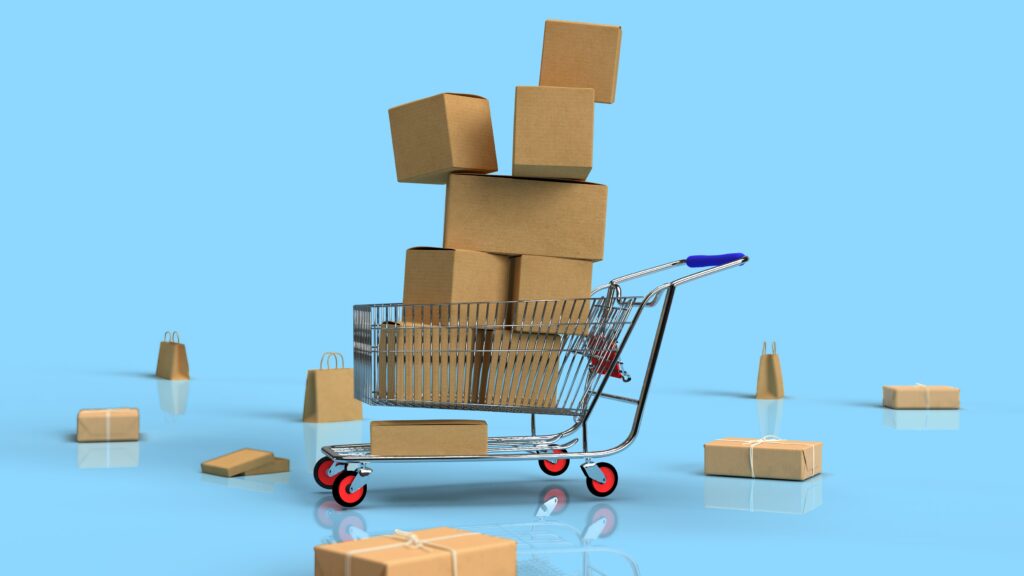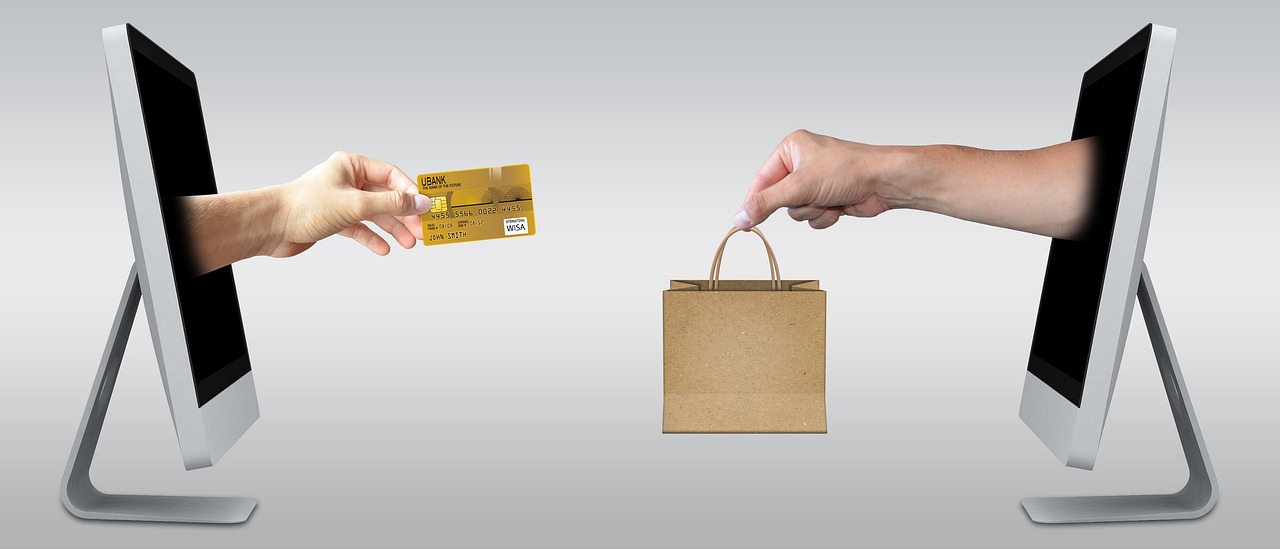Ecommerce Trends you need to know in 2023
In the rapidly evolving digital landscape, the world of Ecommerce has experienced unprecedented growth and transformation. As we step into 2023, it’s crucial to understand the emerging trends that are reshaping the way we shop online. In this comprehensive article, we will explore the exciting developments in the Ecommerce industry, highlighting how businesses and consumers are embracing the future of online shopping.
Ecommerce has come a long way since its inception, and 2023 promises to be a year of significant advancements in online shopping. Let’s delve into the ecommerce trends that are shaping the future of this industry.
The internet has dramatically altered the way we live, work, and shop. Ecommerce, or electronic commerce, emerged as a revolutionary concept that allowed people to buy and sell goods and services over the internet. It all began in the early 1990s when a handful of businesses started experimenting with online sales. Fast forward to 2023, and Ecommerce has become an integral part of our daily lives. With the convenience of shopping from the comfort of our homes, a vast array of products at our fingertips, and the ability to compare prices and read reviews, it’s no wonder that Ecommerce has grown exponentially.
Ecommerce Evolution: A Brief History
Before we dive into the future, let’s take a moment to reflect on how far Ecommerce has come. The journey from the first online sale to the bustling digital marketplaces of today is a testament to human innovation and technological advancement.
In the early 1990s, the concept of online shopping was a novel idea. The very first online sale is believed to have occurred in 1994 when a man named Dan Kohn sold a Sting CD to a friend through a website. This modest transaction marked the beginning of a revolution.
Over the years, Ecommerce platforms and technologies evolved. In the late 1990s, companies like Amazon and eBay paved the way for online retail giants. The dot-com bubble burst in the early 2000s, but Ecommerce persisted, learning valuable lessons along the way.
The 2010s witnessed an explosion of Ecommerce growth, with mobile shopping apps, secure payment gateways, and user-friendly websites becoming the norm. This period also saw the rise of online marketplaces like Alibaba and Shopify, enabling businesses of all sizes to enter the digital marketplace.
Now, in 2023, Ecommerce is no longer a fledgling industry but a dominant force in global commerce. The trends shaping its future reflect the dynamic nature of online shopping.

Augmented Reality (AR) Shopping
Imagine being able to virtually try on clothes, test out furniture in your living room, or see how makeup products look on your skin before making a purchase. Augmented Reality is making all of this possible, revolutionizing the online shopping experience.
Augmented Reality (AR) is not a new concept, but its application in Ecommerce is gaining significant traction in 2023. AR blends digital information with the real world, enhancing our perception and interaction with our surroundings. In the context of online shopping, AR allows customers to experience products virtually before making a purchase. For example, furniture retailers are using AR to enable customers to visualize how a sofa or dining table would fit in their homes. Similarly, fashion brands are offering AR dressing rooms, where customers can see how clothes fit and look on them.
The impact of AR on Ecommerce is profound. It bridges the gap between the physical and online shopping experiences, addressing one of the key challenges of online shopping—the inability to touch and feel products. With AR, customers can interact with products in a more immersive way, leading to increased confidence in their purchase decisions.
AR isn’t limited to just visualizing products; it extends to other senses as well. Some AR applications allow users to hear the sound of a product, such as the crispness of potato chips or the roar of a car engine. This multisensory experience brings a new level of realism to online shopping.
Voice Ecommerce Trend: The Rise of Voice Assistants
With the increasing popularity of voice-activated devices like Amazon’s Alexa and Google Assistant, voice commerce is on the rise. Shoppers can now place orders, search for products, and get recommendations using only their voice.
Voice commerce, also known as v-commerce, is poised to be a game-changer in the world of Ecommerce. It leverages the power of voice-activated digital assistants like Amazon’s Alexa, Apple’s Siri, and Google Assistant to facilitate shopping. Instead of browsing through websites and clicking on products, consumers can simply speak their requests, and the voice assistant handles the rest.
The rise of voice commerce is driven by the convenience it offers. It’s hands-free, allowing users to multitask while shopping. For example, you can be cooking in the kitchen and ask your voice assistant to order groceries or check the status of a package. Voice assistants are also becoming increasingly intelligent, understanding natural language and providing personalized recommendations based on past interactions.
The integration of voice commerce into our daily lives is reshaping consumer behavior. People are growing accustomed to the idea of conversational shopping, where they can engage with brands and make purchases effortlessly using voice commands.

Sustainable Shopping Ecommerce Trend
Consumers are becoming more environmentally conscious, and this trend extends to their shopping habits. Ecommerce businesses are responding by offering sustainable and eco-friendly products, packaging, and shipping options.
Sustainability is no longer a buzzword; it’s a guiding principle for many consumers when making purchasing decisions. As awareness of environmental issues grows, shoppers are seeking out products and brands that align with their values. Ecommerce companies are taking note and integrating sustainability into their offerings.
One way Ecommerce is becoming more sustainable is through eco-friendly product lines. Brands are adopting practices such as using organic materials, reducing waste in production, and creating products that have a longer lifespan. For instance, clothing brands are using recycled materials to make their garments, while electronics companies are designing products with energy efficiency in mind.
The commitment to sustainability goes beyond the products themselves. Ecommerce companies are reevaluating their supply chain and logistics practices to minimize their environmental impact. This includes optimizing shipping routes, using eco-friendly packaging materials, and even exploring carbon-neutral delivery options.
Personalization and AI-driven Recommendations
Ecommerce platforms are using Artificial Intelligence to analyze customer behavior and provide personalized product recommendations. This enhances the shopping experience by showing customers items they are likely to purchase.
Personalization has become a cornerstone of successful Ecommerce. In 2023, online retailers are harnessing the power of Artificial Intelligence (AI) to offer tailored shopping experiences to their customers. This goes beyond merely addressing customers by their first name in emails; it involves analyzing vast amounts of data to understand individual preferences and behaviors.
AI-driven recommendations are at the heart of personalization. When you visit an Ecommerce website, AI algorithms analyze your past purchases, browsing history, and even your mouse movements to suggest products that are highly relevant to you. These recommendations are often displayed prominently on the homepage or product pages, making it easier for customers to discover new items they might be interested in.
AI’s capabilities extend beyond product recommendations. Chatbots, powered by AI, are becoming more conversational and efficient in assisting customers. They can answer queries, provide product information, track orders, and even handle returns and refunds. This level of personalized service enhances the overall shopping experience and builds trust between customers and brands.

Live Commerce: Shopping in Real Time
Live streaming has gained popularity in Ecommerce, allowing businesses to showcase products in real time. Customers can interact with hosts, ask questions, and make purchases directly from the live stream.
Live commerce, also known as live streaming shopping, is a fusion of Ecommerce and live video content. It’s an interactive shopping experience where businesses or influencers broadcast live video streams showcasing products, and viewers can make purchases while watching. This trend has gained significant momentum in 2023, reshaping the way consumers shop online.
The appeal of live commerce lies in its real-time nature. It provides an immersive and engaging shopping experience where customers can see products in action, ask questions, and receive instant responses. It’s akin to shopping in a physical store but with the convenience of doing it from the comfort of your home.
The interactivity of live commerce is a key driver of its success. Viewers can engage with hosts by asking questions, seeking demonstrations, and even making purchase inquiries. This direct line of communication between sellers and buyers creates a sense of trust and authenticity, which is often lacking in traditional Ecommerce.
Blockchain Technology for Transparency
Blockchain technology is being used to ensure transparency in the supply chain. Customers can trace the journey of products from manufacturer to their doorstep, thus building trust.
Blockchain technology, initially developed to support cryptocurrencies like Bitcoin, is finding applications far beyond the realm of digital currencies. In the Ecommerce industry, blockchain is being used to enhance transparency and trust in the supply chain.
One of the key challenges in Ecommerce has been the lack of visibility into the journey of products from their origin to the hands of consumers. This opacity has led to issues like counterfeit products, unclear product sourcing, and ethical concerns. Blockchain offers a solution by creating an immutable ledger of transactions that can be accessed by anyone in the supply chain.
Blockchain’s transparency benefits both businesses and consumers. Businesses can use blockchain to provide customers with real-time information about the status and origin of products. This not only builds trust but also helps in cases of product recalls or quality issues. On the consumer side, blockchain allows shoppers to verify the authenticity and origin of products, supporting their ethical and environmental considerations.

Social Commerce: Shopping on Social Media Platforms
Social media platforms like Instagram and Facebook are introducing shopping features, making it easier for users to buy products directly through these platforms. Social commerce is booming.
Social commerce represents the fusion of social media and Ecommerce. In 2023, major social media platforms are doubling down on their efforts to turn your social feeds into shopping destinations. This trend is changing the way businesses connect with consumers and sell their products.
Imagine scrolling through your Instagram feed and coming across a beautifully curated post from your favorite fashion brand. Instead of merely liking the photo, you can now click on the products featured in the image and make a purchase without leaving the app. This seamless integration of shopping into social media platforms is making it easier than ever for users to discover and buy products.
The rise of social commerce is driven by several factors. First, it capitalizes on the highly visual and engaging nature of social media. Users can see products in action, read reviews from peers, and even get recommendations from influencers they follow. Second, social commerce streamlines the purchasing process, reducing friction by allowing users to buy products with just a few clicks. Finally, it leverages the trust and loyalty that users have for their favorite social media platforms.
Global Expansion of Ecommerce
The Ecommerce market is no longer limited to a single region or country. Businesses are expanding globally, offering their products to a broader international audience.
The concept of global expansion in Ecommerce is not new, but in 2023, it’s reaching new heights. Thanks to advancements in technology and logistics, businesses of all sizes are venturing into international markets with their Ecommerce operations.
One of the driving forces behind global Ecommerce expansion is the accessibility of international customers. With the internet connecting people from around the world, businesses can easily reach a global audience. Ecommerce platforms and marketplaces facilitate this by providing tools for listing and selling products in multiple countries.
However, global expansion is not without its challenges. Businesses must consider factors like local regulations, customs, taxes, and cultural nuances. Adapting to the preferences and expectations of international customers is crucial for success. Additionally, logistics play a vital role, as efficient shipping and delivery are essential for a positive customer experience.
Despite these challenges, the benefits of global expansion are significant. It opens up new revenue streams, reduces dependence on a single market, and allows businesses to tap into regions with growing consumer bases.

Subscription-Based Ecommerce Models
Subscription boxes are gaining popularity. Customers can subscribe to receive curated products regularly, providing convenience and a sense of surprise.
Subscription-based Ecommerce models have gained immense popularity in recent years and continue to thrive in 2023. These models offer customers the convenience of receiving curated products or services regularly, often on a monthly or quarterly basis.
The appeal of subscription boxes lies in the element of surprise and personalization. Subscribers can look forward to receiving a carefully curated selection of products tailored to their preferences. For example, beauty subscription boxes offer skincare and makeup products chosen based on the subscriber’s skin type and preferences. Similarly, subscription meal kits provide ingredients and recipes for home-cooked meals.
Subscription models extend beyond physical products to services like streaming platforms, digital content, and software. Customers value the predictability and convenience of subscription billing, which often comes with cost savings compared to one-time purchases.
Businesses benefit from subscription models by establishing recurring revenue streams and fostering long-term customer relationships. These models also provide valuable data insights into customer preferences and behaviors.
Contactless Payments
With the ongoing focus on health and safety, contactless payment methods are becoming the norm. Mobile wallets and digital payment options are on the rise.
Contactless payments are on the rise in 2023, driven in large part by the ongoing focus on health and safety. In a world where minimizing physical contact has become a priority, contactless payment methods offer a secure and convenient way to complete transactions.
One of the most notable developments in contactless payments is the widespread adoption of mobile wallets. Popular mobile payment platforms like Apple Pay, Google Pay, and Samsung Pay allow users to store their credit or debit card information securely on their smartphones. When making a purchase, they can simply tap their phone on a compatible payment terminal to complete the transaction.
Contactless payments also extend to other forms of digital wallets and payment apps. Cryptocurrencies are gaining acceptance as a legitimate payment method, offering anonymity and security for users. QR code-based payments have become commonplace in many parts of the world, allowing customers to make payments by simply scanning a code with their smartphone.
The convenience and security of contactless payments make them a preferred choice for both in-store and online transactions. As technology continues to evolve, we can expect to see even more innovative and secure payment methods emerge.

User-Generated Content and Reviews
Customer reviews and user-generated content play a significant role in Ecommerce. Businesses are encouraging customers to share their experiences and opinions, building trust among potential buyers.
User-generated content (UGC) has become a cornerstone of Ecommerce marketing in 2023. It encompasses everything from customer reviews and ratings to photos and videos shared by shoppers. Businesses are recognizing the power of UGC in building trust, showcasing products, and creating a sense of community among customers.
Customer reviews are perhaps the most influential form of UGC. They provide valuable insights into product quality, customer service, and overall satisfaction. Positive reviews can instill confidence in potential buyers, while negative reviews offer an opportunity for businesses to address concerns and improve their offerings.
UGC extends beyond reviews to visual content. Shoppers are increasingly sharing photos and videos of their purchases on social media, tagging the brands they love. This user-generated visual content serves as authentic marketing material, allowing potential customers to see products in real-life settings and situations.
To encourage UGC, businesses are implementing strategies such as loyalty programs, social media contests, and branded hashtags. These initiatives not only boost engagement but also foster a sense of community and brand advocacy among customers.
Enhanced Customer Support with Chatbots
Chatbots are being used to provide instant customer support. They can answer queries, track orders, and assist customers 24/7.
Customer support in Ecommerce has evolved significantly in 2023, thanks to the widespread use of chatbots. These AI-powered virtual assistants are reshaping the way businesses interact with customers, offering instant support around the clock.
Chatbots are capable of handling a wide range of tasks, from answering common questions and providing product recommendations to tracking orders and assisting with returns. They offer a seamless and efficient way for customers to get the information they need without the wait times often associated with traditional customer support channels.
One of the key advantages of chatbots is their availability 24/7. Customers can get assistance at any time of day or night, ensuring a positive shopping experience regardless of their time zone or schedule. Chatbots can also handle multiple inquiries simultaneously, reducing response times and improving efficiency.
As AI technology continues to advance, chatbots are becoming more sophisticated in understanding natural language and context. This enables them to provide more personalized and relevant assistance to customers, further enhancing the overall shopping experience.

Cybersecurity and Data Protection
As online transactions increase, so does the importance of cybersecurity. Ecommerce platforms are investing heavily in protecting customer data and financial information.
With the ever-increasing volume of online transactions, cybersecurity has become a top priority for Ecommerce businesses in 2023. Customers entrust these platforms with sensitive personal and financial information, making it essential to maintain robust security measures.
Ecommerce platforms are investing heavily in cybersecurity to safeguard customer data. This includes encryption technologies to protect payment information, multi-factor authentication to prevent unauthorized access, and regular security audits to identify and address vulnerabilities.
Phishing attacks, data breaches, and identity theft are constant threats in the digital world. Ecommerce companies are implementing advanced security measures to combat these risks. Machine learning algorithms are used to detect and prevent fraudulent activities, while data encryption ensures that sensitive information remains confidential.
Beyond protecting customer data, businesses are also focusing on securing their supply chains. Cyberattacks targeting supply chain vulnerabilities can disrupt operations and compromise product integrity. As a result, companies are vetting and monitoring their suppliers’ cybersecurity practices to ensure end-to-end protection.
The Future of Ecommerce: Predictions for 2023 and Beyond
While we’ve covered the trends shaping the Ecommerce landscape in 2023, it’s also worth considering what the future holds for online shopping. Here are some predictions for the coming years:
1. Integration of Virtual Reality (VR): Virtual Reality is poised to enhance the Ecommerce experience further. Shoppers will be able to virtually walk through stores, interact with products, and even attend virtual shopping events.
2. Enhanced AI Chatbots: Chatbots will become even more sophisticated, offering human-like interactions and understanding complex customer queries.
3. Sustainable Practices as the Norm: Sustainability will not be a selling point but an industry standard. Businesses will prioritize eco-friendly practices, from sourcing materials to packaging and logistics.
4. Cross-Platform Shopping: The lines between online and offline shopping will continue to blur. Customers will seamlessly transition between physical stores, websites, social media, and mobile apps while making purchases.
5. AI-Generated Content: AI will play a more significant role in generating product descriptions, reviews, and marketing content, streamlining content creation and personalization.
As technology continues to advance, the Ecommerce industry will evolve accordingly, offering new and exciting opportunities for businesses and consumers alike.

Common FAQs
What is live commerce, and how does it work?
Live commerce, or live streaming shopping, is a real-time shopping experience where businesses or influencers showcase products in live video streams. Viewers can interact with hosts, ask questions, and make purchases while watching.
How is AI used in Ecommerce for personalization?
AI analyzes customer data, including past purchases and browsing behavior, to provide personalized product recommendations. This enhances the shopping experience by showing customers items they are likely to purchase.
What is the significance of blockchain in Ecommerce?
Blockchain technology ensures transparency in the supply chain by creating an immutable ledger of transactions. Customers can trace the journey of products from manufacturer to their doorstep, building trust in the process.
What are some popular sustainable practices in Ecommerce?
Sustainable Ecommerce practices include using eco-friendly materials, reducing waste in production, and offering products with a longer lifespan. Brands are increasingly adopting these practices to attract environmentally conscious consumers.
How can businesses expand globally in Ecommerce?
Global expansion in Ecommerce involves optimizing websites for international audiences, managing logistics efficiently, complying with local regulations, and offering localized customer support. Expanding into new markets requires careful planning and adaptation to local preferences and cultures.
Conclusion
In conclusion, the Ecommerce landscape in 2023 is evolving at a rapid pace. From augmented reality shopping to sustainable practices and global expansion, there are exciting developments that benefit both businesses and consumers. As technology continues to advance, online shopping is becoming more immersive, convenient, and secure. In this rapidly changing landscape, staying informed about these trends is essential for both consumers and businesses. Embracing the future of online shopping means adapting to these innovations and making the most of the convenience and opportunities they offer.






